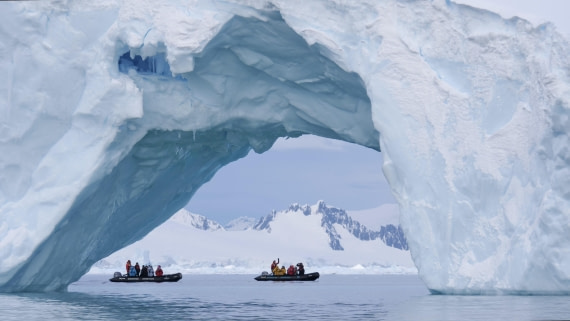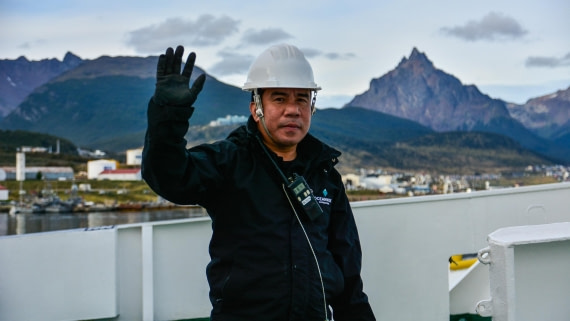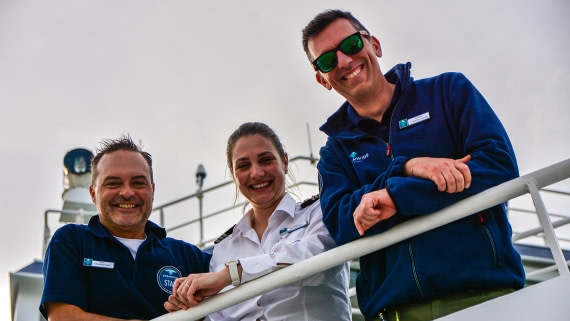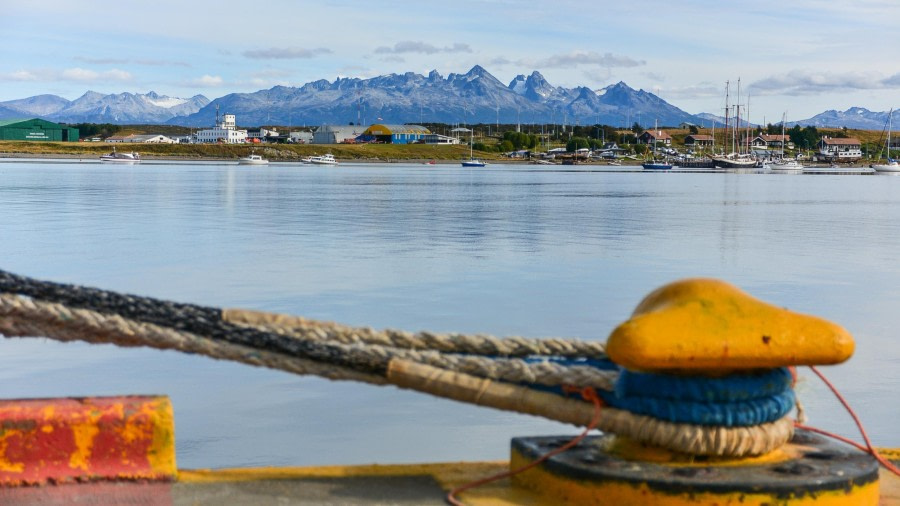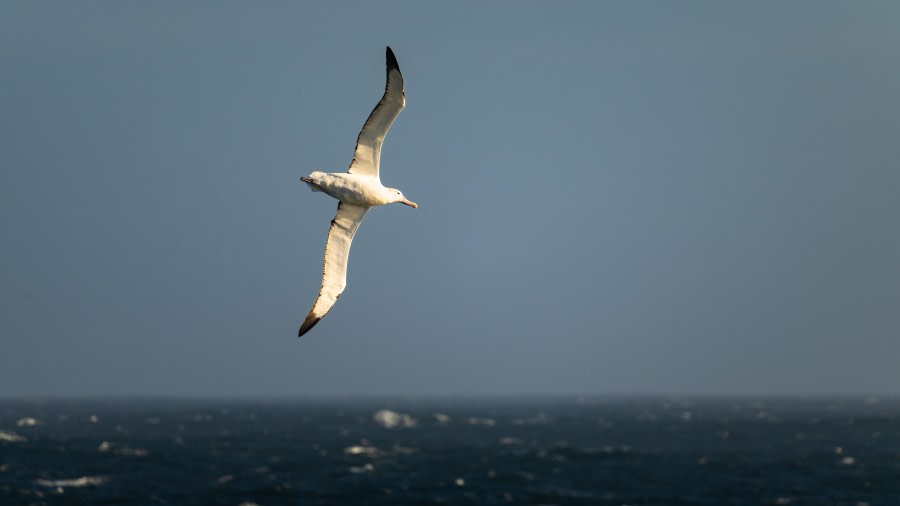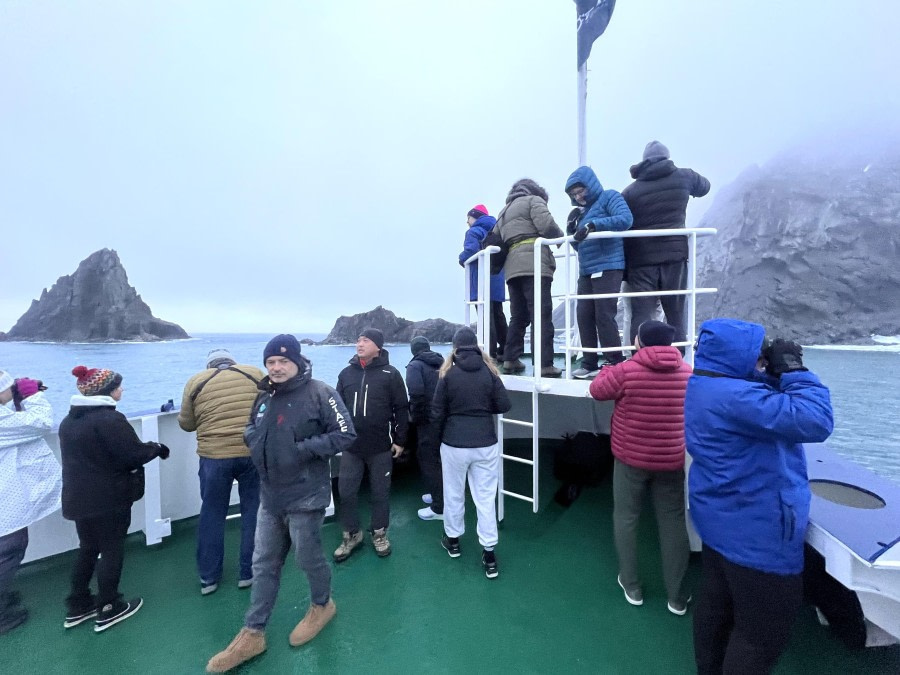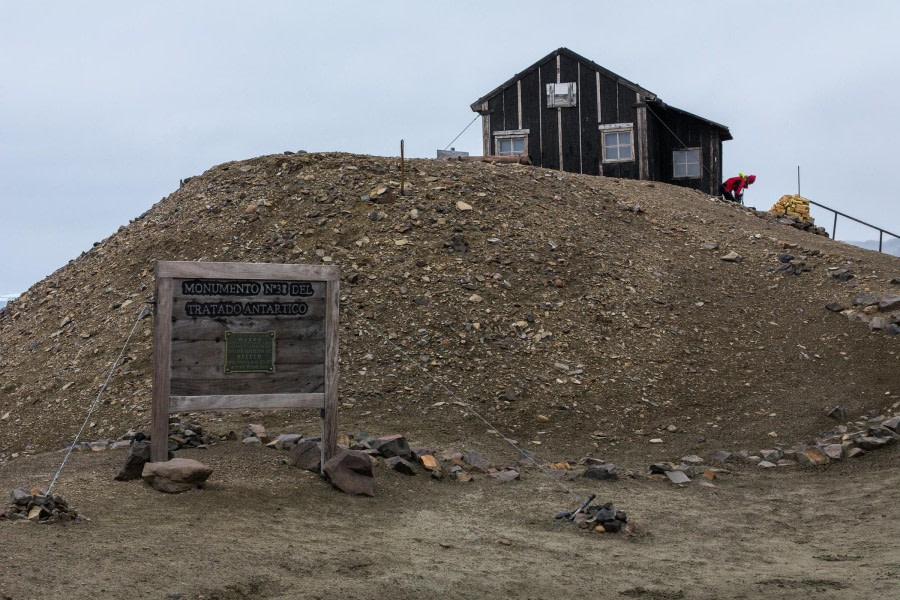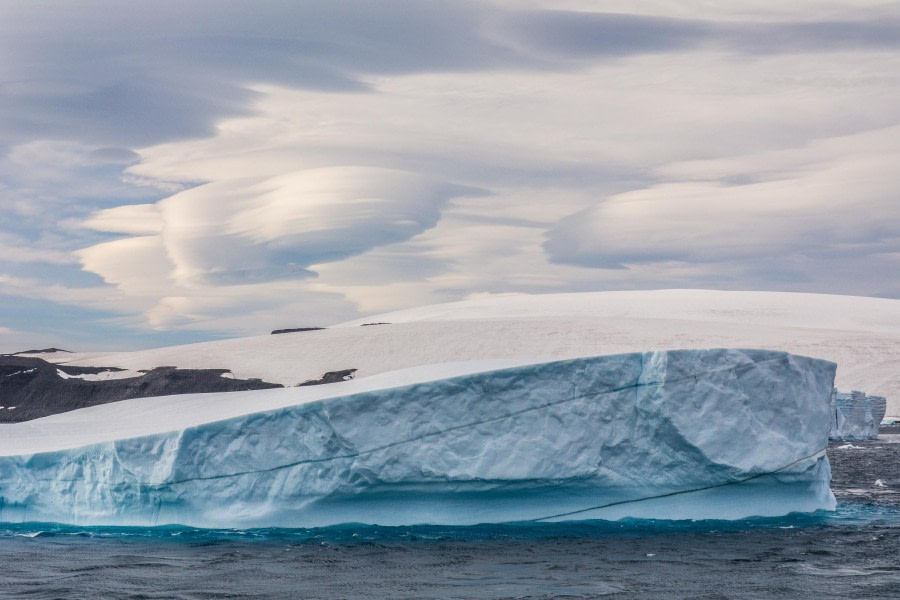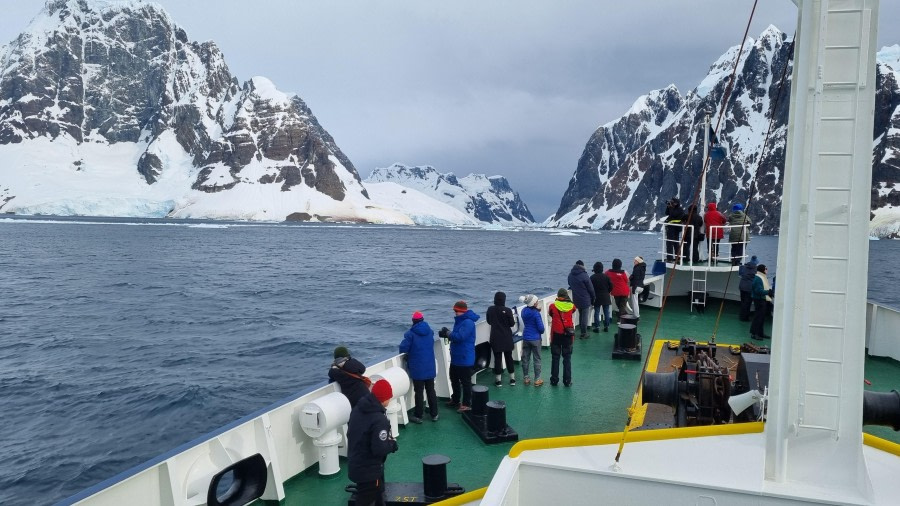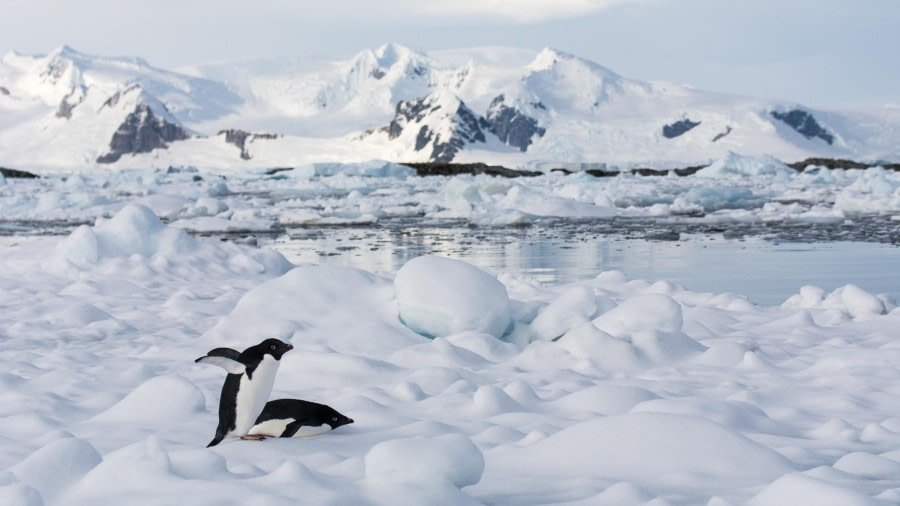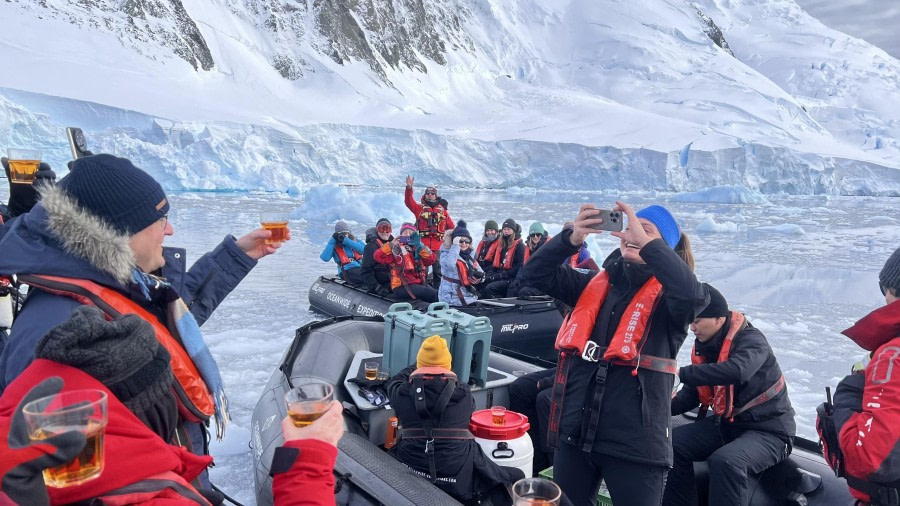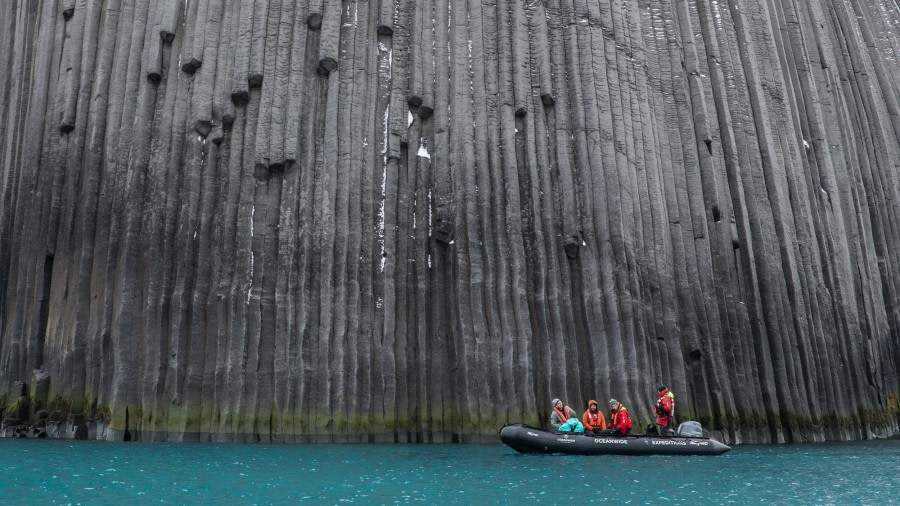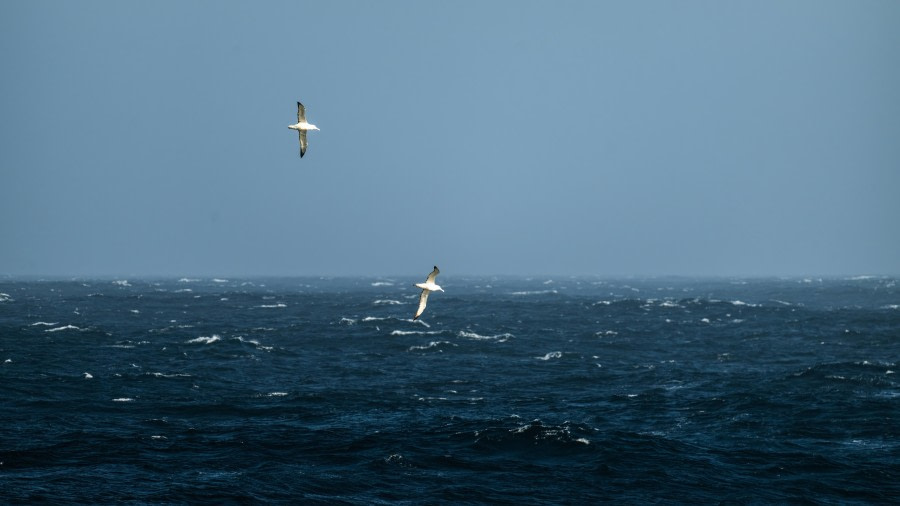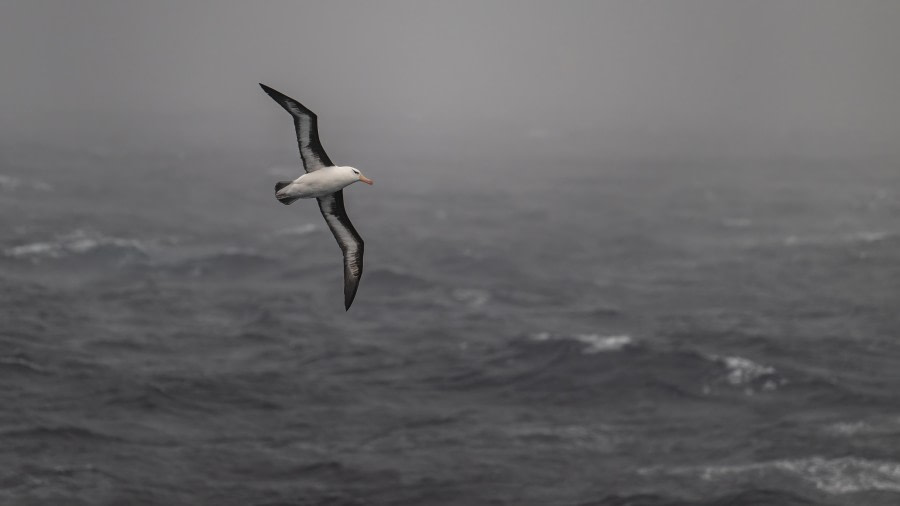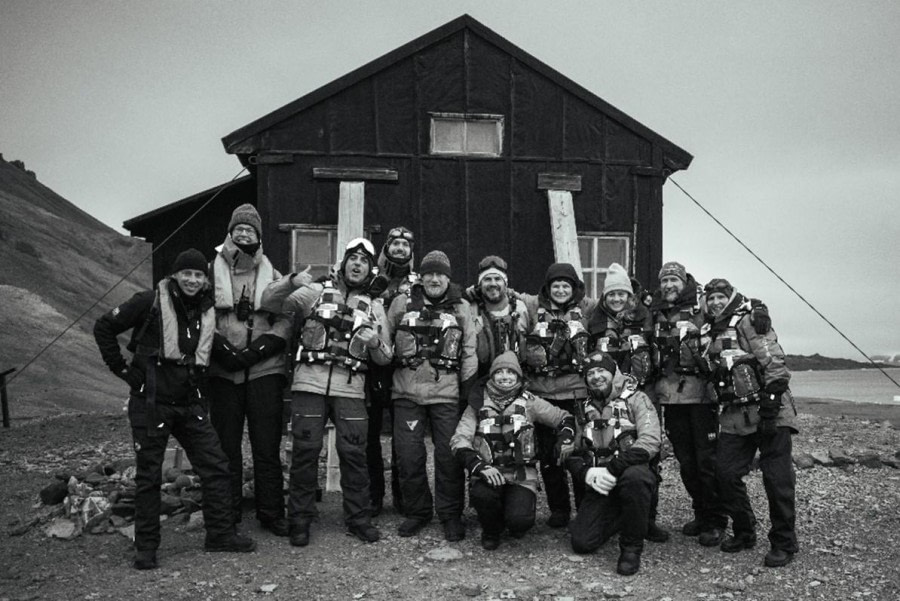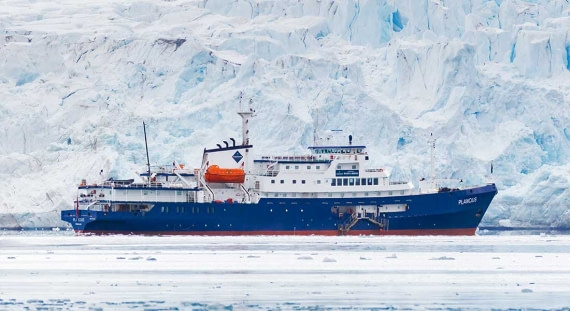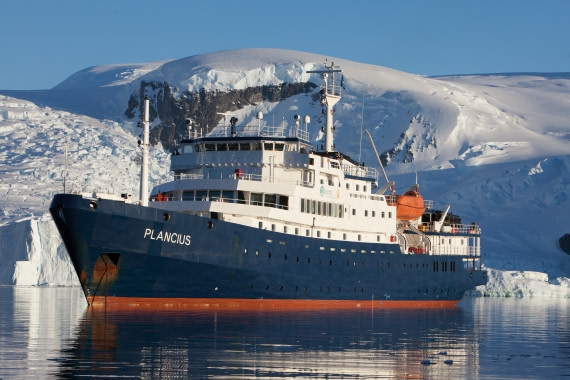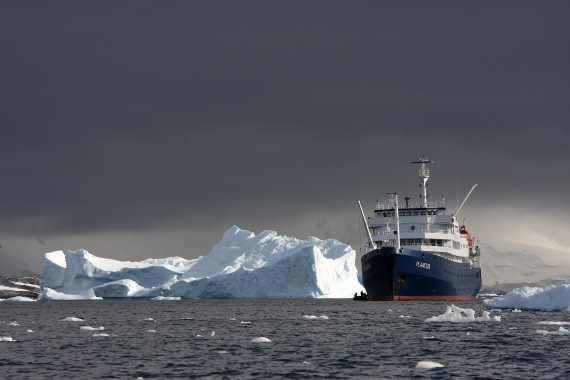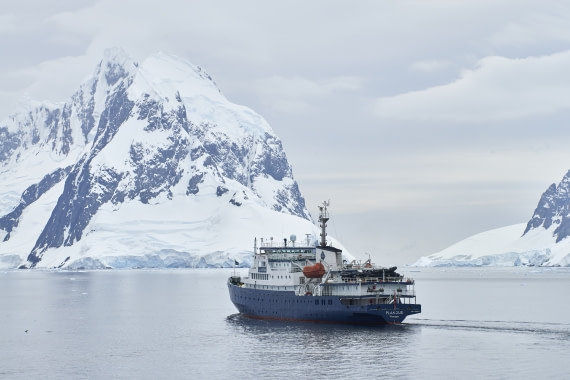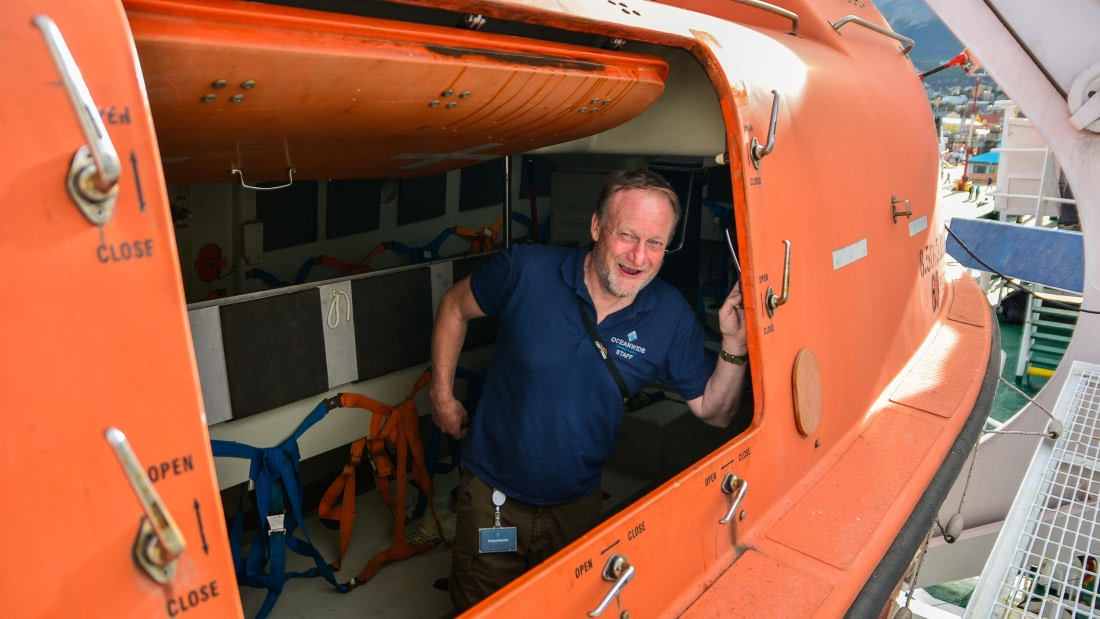| Datum: | 07.03.2024 |
| Positie: | 54° 55,6'S / 67° 25,4'W |
| Wind: | W 2 |
| Weer: | Gedeeltelijk bewolkt |
| Luchttemperatuur: | +14 |
Welkom bij Plancius, welkom bij Oceanwide Expeditions. Vandaag zou ons avontuur naar Antarctica beginnen en we konden niet enthousiaster zijn.
Het was een prachtige zomerdag in Ushuaia met overvloedige zonneschijn, nauwelijks wind en aangename milde temperaturen. Perfecte omstandigheden voor wat last-minute buitensportuitrusting en een laatste kop koffie op vaste grond.
Om 16.00 uur mochten we aan boord gaan van ons prachtige schip M/V Plancius. Ze was een van de kleinere in de haven vandaag, maar zeker ook de coolste. We werden hartelijk verwelkomd door het expeditieteam en het hele hotelteam. Assistent-hotelmanager Alfredo checkte ons in en de vriendelijke bemanningsleden begeleidden ons naar onze hutten.
Om 17:15 uur verwelkomde onze expeditieleider Claudio ons in de lounge waar hij ons meer informatie gaf over de verplichte veiligheidsoefening en de procedure om het schip te verlaten. Nadat we een veiligheidsvideo hadden gezien, gaf de eerste officier ons meer informatie voordat de oefening begon. Toen de alarmsignalen hadden geklonken, gingen we samen met onze grote reddingsvesten terug naar de lounge. We trokken onze reddingsvesten aan en wachtten op verdere instructies. Toen werd het commando schip verlaten gegeven en gingen we allemaal naar het dek waar de reddingsboten liggen. De 3e officier gaf ons meer informatie over de reddingsbootprocedure en daarna was er tijd om een kijkje te nemen in een van de reddingsboten. Niet erg comfortabel of ruim, maar natuurlijk wel noodzakelijk in geval van nood.
En toen was het moment daar; de trossen werden aangetrokken en we verlieten de haven van Ushuaia. Onze expeditie was officieel begonnen! We genoten van het warme weer en de prachtige landschappen vanaf de buitendekken terwijl Ushuaia langzaam kleiner en kleiner werd.
Om 18:30 werden we uitgenodigd om samen met het expeditieteam en de kapitein in de lounge te toasten met heerlijke prosecco en lekkere hapjes. We kregen meer informatie over hoe alles werkt op het schip en hoe de expeditie wordt gepland. Tijdens de expeditie zijn we erg afhankelijk van de weersomstandigheden en Claudio legde uit dat we vaak meerdere plannen hebben voor het geval ons Plan A niet kan worden uitgevoerd. Dat klinkt als een echte expeditie en dat maakte ons nog enthousiaster!
Na een lange dag was het tijd om te eten. Vandaag bereidden chef Ivan en zijn team een heerlijk buffetmenu. We ontmoetten onze medepassagiers in de eetzaal waar het gonsde van het geklets en gelach. Een perfecte manier om de expeditie te beginnen.
De eerste uren van de avond zou het schip nog erg stabiel zijn, maar rond middernacht zouden we de Drake gaan bevaren en zouden de eerste schommelingen voelbaar worden. Welterusten!

